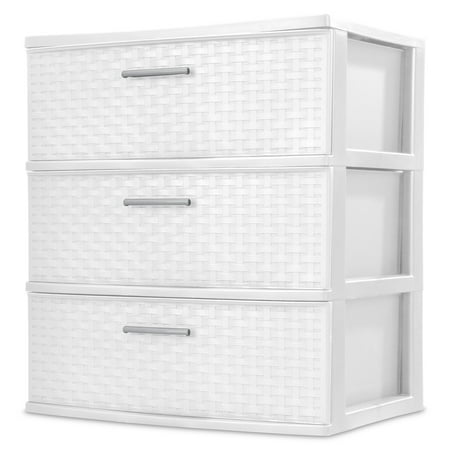I wrote earlier about my mite infestation here and here. So far my containment strategies are working. Though my mite infestation continues, it is in a self-contained universe. And the process of taking worms out of a contaminated bin, rinsing them off, and blotting them on paper towels and rehoming to the mite-free bin is working just fine. I undertook this study because I was unwilling to throw out my initial colony which took a bit of time to cultivate. I'm glad that I went down this path, because I have lots of larvae.
One modification to my initial strategy is that I made to the most contaminated bin was to use a moat strategy (which I read about elsewhere). This ensured that the eggs and tiny larva could develop (I've noticed no deleterious effects from the mites on the worms) while keeping the mites quarantined. To use this strategy, simply put a container within a larger container fille with water. Change the water weekly.
In beginning this process, I had my first beetle 05/09/2018. My original beetle bin is now just down to a fraction of the original size. As this bin was infested (and still is), I keep it separate. No new beetles are added to this bin, and once they die, the bedding (with eggs) will go to the moat bin.
My larger bin of worms has mites, but it is not an overwhelming infestation. I harvest from this bin as well as wash/dry worms and rehome for the mite-free bin so they can move through their life stage. This bin has a large population of larvae (tiny - large).
I wanted to share a few things that have been successful with the feeding and care of the mealworms (all life stages)--particularly to have appropriate moisture:
My mealworm project has been fascinating...in addition to seeing the remarkable life cycle of this beetle, the harvest of the larva keeps my bird friends happy. Nothing is as enjoyable as seeing my bluebirds (and other birds) enjoy their snack. And this time of year, I supplement with special suet enjoyed by all of the birds.
One modification to my initial strategy is that I made to the most contaminated bin was to use a moat strategy (which I read about elsewhere). This ensured that the eggs and tiny larva could develop (I've noticed no deleterious effects from the mites on the worms) while keeping the mites quarantined. To use this strategy, simply put a container within a larger container fille with water. Change the water weekly.
In beginning this process, I had my first beetle 05/09/2018. My original beetle bin is now just down to a fraction of the original size. As this bin was infested (and still is), I keep it separate. No new beetles are added to this bin, and once they die, the bedding (with eggs) will go to the moat bin.
My larger bin of worms has mites, but it is not an overwhelming infestation. I harvest from this bin as well as wash/dry worms and rehome for the mite-free bin so they can move through their life stage. This bin has a large population of larvae (tiny - large).
I wanted to share a few things that have been successful with the feeding and care of the mealworms (all life stages)--particularly to have appropriate moisture:
- I am using food grade cornmeal (bought at restaurant supply store so it is very cheap for a 50lb bag). My original bedding was wheat bran (livestock grade) and it despite microwaving, it was the source of my infestation.
- Because it is so fine, I cannot sift frass from the cornmeal. Okay for larvae as there are no eggs to worry about. Less ideal for beetles.
- Coffee filters: These make a great floater for moist food. The filter absorbs moisure and the larva can eat from below and above.
- Cat food tins: larvae enjoy the remnants of your canned catfood (to include the goo on the lid).
- In looking for moisture, I found the following:
- Leaves---I put some Japanese maple leaves in the larva bin to see what would happen. The worms devoured them.
- Carrots: I have found that taking a vegetable peeler and peeling long strips of carrot is the best way for larva to enjoy....they eat it quickly; get the moisture, and there is no waste. Putting chunks of carrot is a waste, in my view. The worms cannot consume it before it goes past prime.
- Tortillas: Larvae eat the tortillas, but not before they become very hard and dry. In such a state they do not mold, and they provide a natural surface to add moist items (e.g. apple etc). Same for bread.
- Solid Pack Pumpkin (not pie filling): I add this to my dog's diet and thought that the larva and beetles might enjoy. I gave it a try. It was a huge hit. I smeared some on tortilla and some stale bread.
- Vegetable trimmings: The larva enjoy vegetable scraps. Brussel sprout trimmings, cabbage, green peppers etc.
- Apples: I slice thinly if I use. I also offer the core, but find that it will often mold before being fully consumed.
- Celery: sliced thinly
- Lettuce/spinach: any that doesn't quite make it to your plate is appreciated by the larva.
My mealworm project has been fascinating...in addition to seeing the remarkable life cycle of this beetle, the harvest of the larva keeps my bird friends happy. Nothing is as enjoyable as seeing my bluebirds (and other birds) enjoy their snack. And this time of year, I supplement with special suet enjoyed by all of the birds.







